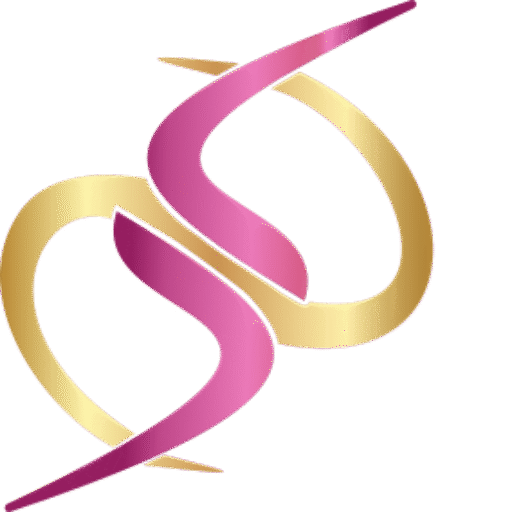In the realm of cosmetic treatments, thread lifts have become a popular choice for individuals seeking a youthful appearance without the rigors and risks associated with invasive surgery. This innovative procedure involves the use of cosmetic threads to subtly lift and tighten the skin, providing a rejuvenated and refreshed look. But what precisely are thread lifts, and how do they achieve these effects? In this article, we will delve deeper into the intricacies of thread lifts, examining their benefits, the procedural details, and what one can realistically expect from this cutting-edge anti-aging treatment.
Understanding Thread Lifts
Thread lifts serve as a non-surgical alternative to traditional facelifts, aiming to rejuvenate facial features by addressing sagging skin. Unlike traditional facelifts, which necessitate incisions and often require lengthy recovery times, thread lifts are minimally invasive, delivering quicker results with significantly less downtime.
The Basics of Cosmetic Threads
Cosmetic threads are the cornerstone of the thread lift procedure. These threads are primarily made from polydioxanone (PDO), a biocompatible material extensively used in medical sutures. The absorbable nature of PDO threads means they gradually dissolve, leaving behind a supportive scaffold of new collagen within the skin.
The threading process involves the careful insertion of these threads beneath the skin using a fine needle. Once inserted, the threads are gently manipulated to lift and tighten the skin, effectively enhancing its youthful appearance. This process not only lifts the skin but also promotes increased collagen production, which is crucial for skin elasticity and firmness.
The Benefits of Thread Lifts
Thread lifts present numerous advantages for individuals seeking an effective anti-aging treatment. Here are some of the primary benefits:
Minimal Downtime
One of the most significant advantages of thread lifts is the minimal downtime required post-procedure. Most patients can resume their regular activities within a few days, making it an attractive option for those with demanding schedules who cannot afford extended recovery periods.
Natural-Looking Results
Thread lifts are renowned for delivering subtle, natural-looking results. The procedure enhances the facial contours without altering the fundamental structure of the face, ensuring that the individual appears as a more refreshed version of themselves, rather than a dramatically altered one.
Stimulates Collagen Production
The PDO threads used in thread lifts play a pivotal role in stimulating collagen production, a protein vital for maintaining skin elasticity and firmness. As the threads naturally dissolve over time, the increased collagen production continues to support the lifting effect and enhance skin texture.
Versatility
Thread lifts are highly versatile, capable of addressing various facial areas, including the cheeks, jawline, neck, and even the eyebrows. This adaptability allows practitioners to create a personalized treatment plan tailored to the specific needs and desires of each patient, providing a comprehensive approach to facial rejuvenation.
The Thread Lift Procedure
Before opting for a thread lift, it’s crucial to understand what the procedure involves. Here’s a detailed step-by-step guide to what you can anticipate:
Consultation
The initial step in the thread lift journey is a thorough consultation with a qualified practitioner. During this consultation, you’ll have the opportunity to discuss your aesthetic goals, any concerns you might have, and your medical history. The practitioner will assess your skin’s condition and determine if you are an ideal candidate for the procedure, ensuring that your expectations align with the potential outcomes.
Preparation
On the day of the procedure, specific preparations are necessary. You’ll be advised to avoid wearing makeup and to cleanse your face thoroughly. The practitioner will apply a local anesthetic to the treatment area to numb it and minimize any discomfort during the procedure, ensuring a more comfortable experience.
Inserting the Threads
The actual threading process involves the insertion of PDO threads beneath your skin using a fine needle. The number of threads utilized will depend on the areas being treated and the desired lifting effect. Once the threads are in place, they are carefully adjusted to lift and tighten the skin, achieving the desired contour and rejuvenation.
Completing the Procedure
Typically, the thread lift procedure takes about 30 to 60 minutes, depending on the extent of the areas being treated. After the procedure, you’ll receive detailed post-procedure instructions to follow, which may include avoiding strenuous activities and certain facial movements for a few days to ensure optimal healing and results.
What to Expect After a Thread Lift
Following a thread lift, it’s common to experience some mild side effects such as swelling, bruising, and discomfort in the treated areas. These effects are usually temporary and should subside within a few days, allowing you to enjoy the benefits of the procedure relatively quickly.
Immediate Results
One of the most appealing aspects of thread lifts is the ability to witness immediate results. The lifting effect is noticeable right after the procedure, although the full results will continue to improve as collagen production increases in the weeks following the treatment.
Long-Lasting Effects
While thread lifts do not provide permanent results, they offer long-lasting effects. The benefits of a thread lift can endure for approximately one to two years, depending on individual factors such as age, skin type, and lifestyle habits, providing a prolonged period of rejuvenation.
Maintenance
To sustain the results of a thread lift, some patients choose to undergo follow-up treatments or combine thread lifts with other cosmetic procedures, such as dermal fillers or Botox. This approach can enhance the overall effect, offering a comprehensive anti-aging strategy tailored to individual needs.
Are Thread Lifts Right for You?
Thread lifts present a viable option for individuals seeking a non-surgical solution to combat sagging skin and signs of aging. However, they may not be suitable for everyone. Ideal candidates for thread lifts are individuals with mild to moderate skin laxity who desire subtle, natural-looking results without the commitment of surgical intervention.
Considerations
Before deciding on a thread lift, it’s essential to consider factors such as your skin type, medical history, and cosmetic goals. Consulting with a qualified practitioner is crucial, as they can assess your needs, provide personalized recommendations, and help you make an informed decision regarding the suitability of the procedure for your specific situation.
Conclusion
Thread lifts offer a promising and innovative solution for those seeking facial rejuvenation without resorting to invasive surgical procedures. With their ability to lift and tighten the skin, stimulate collagen production, and deliver natural-looking results, thread lifts have gained popularity in the realm of anti-aging treatments. If you’re contemplating a thread lift, consulting with a qualified practitioner is a vital step to determine if this procedure aligns with your aesthetic goals and to embark on your journey towards a more youthful and refreshed appearance.
Types of Thread Lifts
PDO Thread Lift: Polydioxanone (PDO) threads are one of the most common types used in thread lifts. These threads are fully absorbable and encourage collagen synthesis as they dissolve, which helps to lift and tighten the skin over time. They are typically used for rejuvenating the cheeks, jawline, and neck.
PLLA Thread Lift: Poly L-lactic Acid (PLLA) threads are stronger than PDO threads and dissolve slowly over time. PLLA threads are particularly effective for deeper skin layers, providing a significant lift and volume enhancement by stimulating collagen production over a prolonged period.
PCL Thread Lift: Polycaprolactone (PCL) threads take the longest to dissolve (up to two years) and are used for long-lasting skin rejuvenation. They provide continuous collagen production and are excellent for tackling deeper wrinkles and more pronounced sagging.Where can it be used?
Face: To enhance facial contours, lift sagging cheeks, and tighten the jawline.
Neck: To reduce the appearance of sagging and smooth out wrinkles.
Brows: To elevate drooping eyebrows, creating a more alert and youthful appearance.
Jowls and Jawline: To improve the definition and sharpness of the lower face.
Cheeks: To restore lost volume and reduce the visibility of nasolabial folds (smile lines).
Nose: Some threadWhat are the benefits of Thread Lift?
Minimally Invasive: Unlike traditional facelifts, thread lifts require no cuts or stitches, which means less risk of scarring and a significantly shorter recovery period.
Immediate Results: The lifting effect is visible immediately after the procedure, though the full effect becomes more apparent over several months as new collagen is formed.
Short Recovery Time: Most patients experience minimal downtime and can return to normal activities within a couple of days, making it a convenient option for those with busy lifestyles.
Safety: Since the threads used are biodegradable, they are safely absorbed by the body over time, reducing the risk of complications associated with permanent implants.
Collagen Stimulation: The process of thread insertion and the gradual absorption of the threads stimulate the body’s natural production of collagen, which improves skin texture and firmness.
Versatility: Thread lifts can be used to treat various parts of the face and neck, allowing for a customized treatment plan that targets specific areas of concern.
Cost-Effective: Generally, thread lifts are less expensive than surgical facelifts, making them a more accessible option for those looking to reduce signs of aging without a hefty price tag.What Areas Can Thread Lift Be Used On?
Thread lifts can be effectively used on various parts of the face and neck to enhance appearance and reduce signs of aging. Common areas for a thread lift include the cheeks, jawline, neck, and eyebrows.
Does the Thread Lift Procedure Require Anesthesia?
Generally, thread lifts can be performed under local anesthesia, which numbs the treatment area but allows you to remain awake. This makes the procedure relatively pain-free while minimizing the risks associated with general anesthesia.
What Are the Things to Consider When Deciding About a Thread Lift?
When considering a thread lift, evaluate factors such as the practitioner’s expertise, the quality of the threads used, your skin condition, and your overall health. It’s also crucial to have realistic expectations about the results and understand the potential risks and benefits.
Am I a Candidate for Thread Lift?
Ideal candidates for a thread lift are typically those experiencing mild to moderate signs of facial aging who seek a less invasive alternative to traditional facelift surgery. Good candidates should have realistic expectations, not smoke, and be in general good health.
How Long Is the Recovery Period After the Procedure?
The recovery period after a thread lift is usually quite brief. Most patients can resume normal activities within a few days. Minor swelling, bruising, or soreness might occur but typically subsides within a week.

